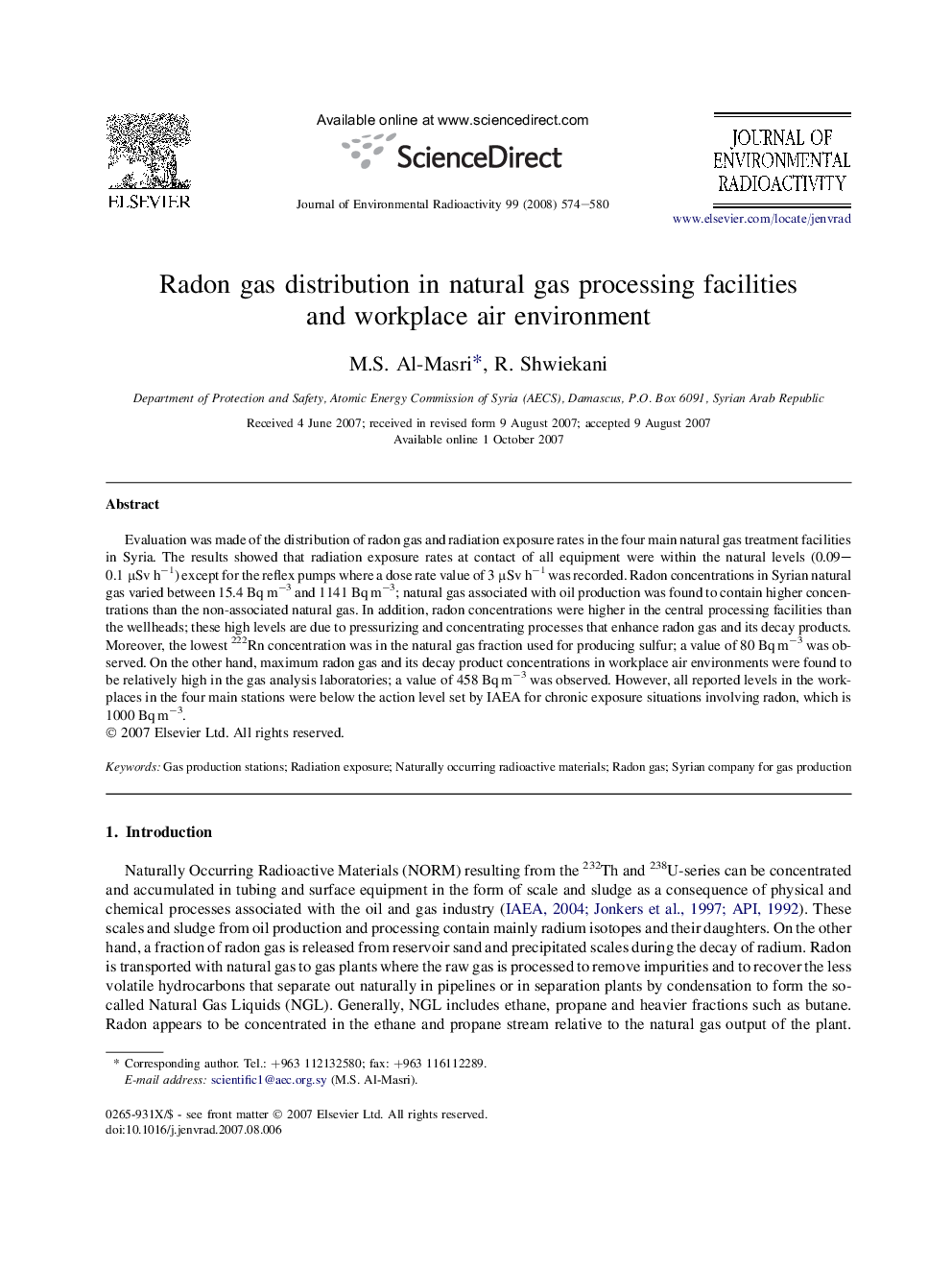| Article ID | Journal | Published Year | Pages | File Type |
|---|---|---|---|---|
| 1739271 | Journal of Environmental Radioactivity | 2008 | 7 Pages |
Abstract
Evaluation was made of the distribution of radon gas and radiation exposure rates in the four main natural gas treatment facilities in Syria. The results showed that radiation exposure rates at contact of all equipment were within the natural levels (0.09-0.1 μSv hâ1) except for the reflex pumps where a dose rate value of 3 μSv hâ1 was recorded. Radon concentrations in Syrian natural gas varied between 15.4 Bq mâ3 and 1141 Bq mâ3; natural gas associated with oil production was found to contain higher concentrations than the non-associated natural gas. In addition, radon concentrations were higher in the central processing facilities than the wellheads; these high levels are due to pressurizing and concentrating processes that enhance radon gas and its decay products. Moreover, the lowest 222Rn concentration was in the natural gas fraction used for producing sulfur; a value of 80 Bq mâ3 was observed. On the other hand, maximum radon gas and its decay product concentrations in workplace air environments were found to be relatively high in the gas analysis laboratories; a value of 458 Bq mâ3 was observed. However, all reported levels in the workplaces in the four main stations were below the action level set by IAEA for chronic exposure situations involving radon, which is 1000 Bq mâ3.
Related Topics
Physical Sciences and Engineering
Energy
Nuclear Energy and Engineering
Authors
M.S. Al-Masri, R. Shwiekani,
